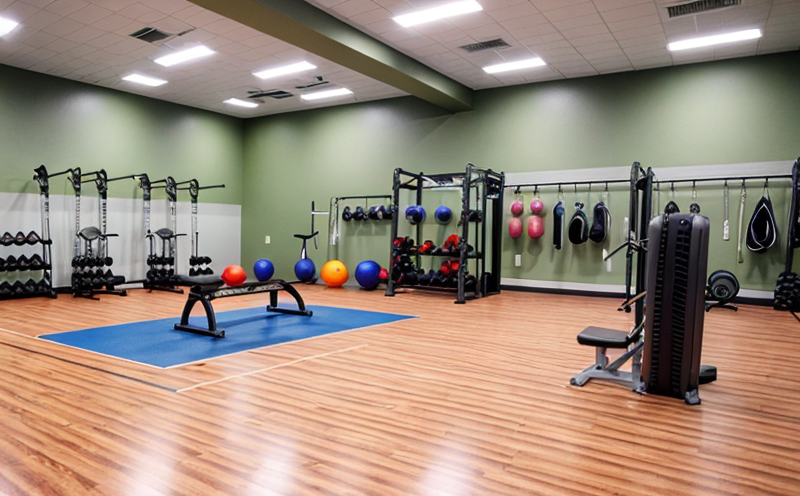Mat Durability Testing in Trampolines
In consumer products and product safety testing, durability is a critical factor when it comes to trampolines. The mat, which forms the primary contact surface for users during use, must withstand various environmental factors and stressors while ensuring user safety. This section discusses the importance of testing mat durability in trampolines from a consumer products perspective.
The durability of a trampoline's mat is determined by its ability to resist wear and tear under prolonged use. Factors such as the number of users, frequency of usage, environmental conditions (temperature, humidity), and type of surface contact contribute significantly to the degradation process. To ensure high-quality performance and safety standards, manufacturers must undergo rigorous testing to validate the durability of their mats.
Durability tests for trampoline mats typically involve simulating real-world use scenarios. This includes applying loads that mimic typical user weights multiple times over extended periods. Additionally, environmental factors such as temperature cycling between extremes may also be considered during these simulations. Compliance with international standards like ISO 9230 ensures consistency across different markets and helps establish trust among consumers.
The testing process involves careful preparation of the specimen before actual stress application. Specimens are cut from batches intended for commercial release, ensuring they represent typical production conditions accurately. Instruments used in this procedure include load cells capable of measuring forces exerted on the mat surface during simulated jumps or impacts. Specialized equipment replicates jumping motions to simulate realistic user interactions with the trampoline.
Once testing is complete, results are analyzed based on predefined acceptance criteria established by industry regulations and guidelines. Key performance indicators (KPIs) include resistance against punctures, tear propagation rates, tensile strength values, elongation at break points, and overall resilience ratings.
The findings from these tests play a crucial role in meeting regulatory requirements set forth by various governmental bodies worldwide. By demonstrating compliance with relevant standards such as ASTM F1837 or other applicable local laws, manufacturers can ensure their products meet safety expectations and provide peace of mind for consumers.
In summary, mat durability testing in trampolines is essential to guarantee the longevity and reliability of these recreational items. It serves as a vital step towards protecting users' well-being while enhancing brand reputation through adherence to industry best practices.
Scope and Methodology
- Load Application: Simulating jumps using standardized weights distributed across the mat surface.
- Environmental Factors: Exposing specimens to controlled temperature cycles and humidity levels.
- Specimen Preparation: Cutting samples from production runs to ensure representative testing conditions.
- Instrumentation Used: Load cells for force measurement, specialized equipment for replicating jumps.
The scope of mat durability testing encompasses both functional aspects (such as load-bearing capacity) and aesthetic properties (like color retention). By employing advanced analytical techniques, laboratories can provide comprehensive evaluations that encompass every aspect relevant to the end-user experience.
| Test Parameter | Description |
|---|---|
| Load Capacity | Determines how much weight a mat can support before deformation occurs. |
| Elongation at Break Point | Metric for measuring the stretchability of materials under tension until they fracture. |
| Tear Resistance | Assesses material's ability to resist tearing or splitting along its edges. |
| Surface Integrity | Evaluates whether there has been any damage to the mat's surface after testing. |
The methodology employed follows strict protocols outlined in relevant international standards, ensuring consistent and accurate results. These tests not only help maintain quality control throughout production but also contribute significantly towards achieving certification compliance.
Environmental and Sustainability Contributions
- Eco-Friendly Materials: Using sustainable resources whenever possible to reduce the environmental impact of manufacturing processes.
- Energy Efficiency: Minimizing energy consumption during testing procedures through efficient use of equipment and minimizing waste generation.
- Recyclability: Ensuring that components used in testing can be easily recycled at end-of-life stages to minimize landfill contributions.
Durability testing contributes positively towards environmental sustainability by promoting the development of more robust materials with longer lifespans. This reduces overall resource consumption and waste production associated with frequent replacement of substandard products. Additionally, by optimizing material selection and manufacturing processes based on test outcomes, companies can significantly decrease their carbon footprint throughout the product lifecycle.
The focus on durability also extends beyond just reducing material usage; it encourages innovation in design that prioritizes both performance enhancement and environmental responsibility. Through careful analysis during testing phases, manufacturers gain insights into potential areas for improvement which could lead to more sustainable practices across industries involved in consumer goods manufacturing.
Use Cases and Application Examples
Durability testing plays a pivotal role not only within the realm of product safety but also extends its application into broader sectors where reliability is paramount. Here are some specific use cases:
- Sporting Goods Manufacturer: Ensures consistent quality across all models by validating that mats can withstand repeated stress without failing.
- Retailers: Provides assurance to customers about the longevity of purchased items through certification compliance documentation.
- Insurance Companies: Utilizes data from these tests when assessing risks related to accidental damage claims involving trampolines.
These real-world applications underscore how crucial it is for manufacturers and retailers alike to invest in robust testing methodologies. By doing so, they not only enhance customer satisfaction but also contribute towards safer recreational environments.





